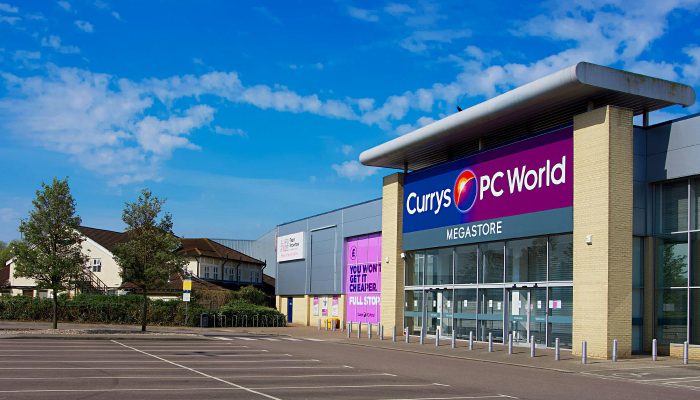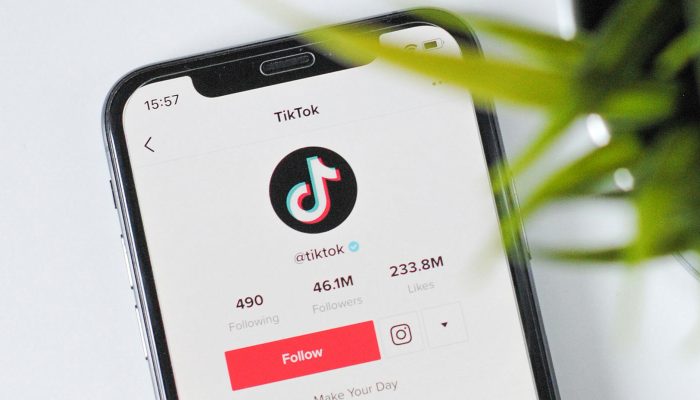Introduction
Ecommerce marketing during the festive season is something that everyone should experience at least once in their career. With the rise in popularity of Black Friday and insights showing that customers are now shopping earlier than ever for Christmas, the festive season is full-on and feels like it lasts forever.
Seeing revenues hit higher levels you didn’t previously expect, constantly collaborating to get the best ROAS of the year and being constantly on top of daily data to jump on any potential opportunities? What a rush!
However, it’s very easy to get sucked into the thrill and not look ahead after the festive period. What do you do when the dust settles, and the January blues begin to set in? Where have all these new customers gone?
Research by ecommerce firm LoyaltyLion discovered that there is only a 27% chance that a customer acquired during big seasonal events will make a second purchase and 64% of retailers in the same study said these customers also have a much lower customer lifetime value (CLV).
How do we keep these new customers and turn them into brand loyalists? One vital channel is email.
Why should you focus on loyalty and retention?
First of all, it’s important to understand why we should focus on retention. According to Paul Farris’ book “Marketing Metrics”, the probability of a previous customer making a repeat purchase is 60-70%, compared to the probability of a new customer which sits at 5-20%.
With important statistics such as acquiring a new customer costing 7x more than to retain an old one and increasing customer retention by 5% increasing profits by 25-95%, there is absolutely no doubt that retention should be an important focus for any ecommerce store.
How do you make customers loyal to your brand?
Getting a customer to make a repeat purchase is great and is an excellent hurdle to overcome. However, where the best results can be seen is when you turn a customer into a brand loyalist or ambassador. These are customers who buy from your brand consistently, supply you with an unlimited amount of user generated content (UGC) and buy without a second thought.
The relationship between a brand and a consumer is exactly that – a relationship. Like any relationship, it’s built on trust.
There is no simple formula to build this trust and to create brand loyalty as every ecommerce store and every customer is different. However, there are steps you can take to improve loyalty for your brand and increase customer lifetime value.
Know your niche and customers
Knowing your niche and customers inside-out makes increasing brand loyalty much easier. Three key aspects of increasing brand loyalty are:
- Creating a specific value proposition that resonates with your audience.
- Delivering engaging and relevant content to your target audience.
- Building a community that your target audience can feel a part of.
When you know your niche and your customers, you can be sure that these three aspects are taken care of and relates to your target audience.
Value proposition
Your value proposition must strike that spark between your audience and your brand. Why did you create your brand? Why should people care? Our client, Immaculate Vegan, has a great value proposition on their website:
“We love fashion. We just don’t like what it does to the planet, animals and people. So we decided to change it.
From vegan shoes, bags and accessories to ethical and sustainable clothing and homewares, we select the best and most beautiful vegan products in the world, and make it easy for others to discover and buy them.”
Straight away, they connect to their target audience and grips any consumer who is interested in sustainable, high-end fashion. It’s also simple and easy to understand.
Content-first approach
A content-first approach is a shift in focus that many ecommerce brands are seeing fantastic success with. Instead of the usual focus on advertising and sales, a content-first approach looks to make content the priority and this delivers fantastic results for brand loyalty.
Now, not just any content will do in this case. It needs to be content which is engaging, relatable and genuinely helps your target audience and customers. Or, alternatively, it can be entertaining and humorous.
“A business is a series of communications (your brand) directed at a group of people having a shared experience (your market)”
-Ezra Firestone, Smart Marketer
The above quote from ecommerce guru Ezra Firestone is the perfect way to dictate what content your brand should put out. Is your community having a shared experience? Great. That’s your next piece of content.
During the festive period, Immaculate Vegan put together a fantastic article on how to have a sustainable and ethical Christmas. With Immaculate Vegan and their target audience sharing important values of protecting the planet and reducing waste, this article performed exceptionally well.
It’s important not just to create the content, but also to promote it. Our top of funnel awareness campaign on Facebook dedicated to promoting content is one of our best performers and we constantly push out new content pieces via email.
The deeper you know and understand your audience, the more personable you can make your content and the better effect it will have on helping your customers – which will inevitably improve brand loyalty.
Build a community
Online communities are currently generating a 6,469% ROI. Let that sink in for a moment.
Building a community is one of the most fruitful endeavours when it comes to ecommerce, but it can also be one of the most difficult things to create. It takes effort, a complete understanding of your customers – and bravery. Your community may discuss things you are unhappy with, but it’s important to give them freedom and have an open discussion.
One of the most common ways to build up this community is by using a Facebook group. Organic reach from Facebook pages has seen a steep decline over the years as mentioned by Hayley, our Senior Paid Social Executive. Facebook groups counteract this by being much more favourable with the Facebook algorithm. Facebook groups promote a more collaborative environment which often sees group posts receiving a lot more engagement which also helps increase favour with the Facebook algorithm.
A wonderful example of this is by Sneak. Sneak describe themselves as a “clean energy alternative” to energy drinks by offering a low-calorie and sugar-free energy drink. Their “SNEAK Community” Facebook group has over 17,000 members and is continuously growing. The value this gives their brand is immense. I have seen multiple potential customers post in the group asking for recommendations and Sneak lovers jump in to profess their love for their favourite flavours. Often, this can even lead to potential customers purchasing more than originally planned because they want to try multiple flavours that have been recommended to them. Even better, this costs SNEAK almost nothing in marketing. The group also provides a wealth of user generated content that is pivotal when promoting your brand.
Also, on a personal level, there’s something nice about feeling part of a community and having the “SNEAK” Facebook profile comment on your post within the group almost feels like having a celebrity tweet you!
Personable customer service
Poor customer service is easily one of the largest catalysts in losing a brand loyalist. 47% of customers would go to a competitor within 1 day after receiving poor customer service. Not having bad customer service isn’t enough either, consumers now have higher standards for customer service. A recent survey showed that 58% of consumers said their customer service expectations are higher today than a year ago.
Loyalty is dictated by trust. I’ve spoken a lot about brand ideas and values, but a customer is much more likely to trust a real-life human than an idea or a value. It’s important to offer stellar customer service that is personable, proactive and high quality.
Subscription service
A subscription service can greatly improve customer lifetime value and increase customer retention. Although you may think this isn’t suitable for your ecommerce business, many companies have been very creative with this, such as Amazon and Scrubbingtons.
When working with Scrubbingtons, they discovered that a subscriber had a considerably higher average lifetime value than a regular customer. In response to this, we used segmentation to combine email marketing and Facebook advertising to target relevant remarketing audiences with specific offers based on their purchase history – to encourage an uplift in subscriptions.
From this, we found that the “convenience” messaging performed exceptionally well, even outperforming special offers such as “20% off” or a “free gift” and gave us a much lower churn rate. From the subscription campaign, we saw a 45% increase in new subscribers and a 120% increase in subscribers from email campaigns, all with a £15 cost per new subscriber via Facebook ads. This ultimately leads to additional profit as these new subscribers have a larger LTV on average.
Honourable mentions
- Create a brand loyalty program to promote recurring purchases and reward loyal customers.
- Provide unique offers to previous customers based on their purchase history.
- Use historic purchase data to cross-sell and upsell the right products.
- Ask your customers for feedback with a survey to help improve your service.
- Referral programs can help encourage customers to bring their friends into your community with an added incentive for them.
- Invest in customer experience. An easy experience makes it much easier to buy from again.
- Offer flexible (and accurate) delivery times and competitive costs. With Amazon being a huge player now, consumers have come to expect a higher standard of service when it comes to deliveries. Additionally, a simple and hassle-free returns process and policy is important.
- Deliver on your promise. Make sure your product delivers on its promise and does what it’s supposed to do. Otherwise, you’ve just lost a potential repeat customer.
- Asking for reviews can help build up a relationship with your customers and encourage new customers to purchase. The more new customers, the more potential brand loyalists!
- Surprise & delight – can you include a small unexpected gift or a personalised thank you not with their first order?
Brand loyalty is hotly debated and there are many differing opinions on how best to approach it. Although we like to think that the reason a customer keeps coming back to us is because they love the brand and everything we stand for, there are a lot of consumers out there that just shop for the best price, the best loyalty offer or even through the influence of an (accurately named) “influencer”.
Where does email come into it?
“Email has an ability many channels don’t: creating valuable, personal touches—at scale” – David Newman | Do It! Marketing author
Now we know how to build brand loyalty, email is our primary tool to promote it. Email is a fantastic tool as it allows us to deliver personalised messages to highly targeted audiences and gives us amazing analytics that can give us a wealth of information about our customers. Studies show that for every $1 spent on email marketing, you can expect an average return of $42.
Using the following techniques which we implement in our email marketing at Space & Time, you can increase brand loyalty exponentially and take full advantage of the huge ROI that email can provide.
Post-purchase flow
Quite often we’ll meet ecommerce brands with amazing values and great content that is perfect for their target market. However, they don’t promote them!
The post-purchase flow is an email automation set up to send multiple emails after a customer has made their first purchase. These emails build excitement for their new product arriving, promote cross-sells to increase customer lifetime value and look to engage with the user to complete a survey or request user generated content (UGC).
We break our post purchase flow into 4 main sections:
Pre-arrival emails
These are emails sent before a customer receives their product. These are intended to build excitement, reduce buyer remorse, reduce refund rates and begin to create that brand affinity to help build that relationship.
Ideas for content in these emails can be:
- Brand identity content.
- Product or brand FAQs.
- Social proof, science, case studies.
- “Box opening” videos.
- Product tutorials.
Content, engagement and relationship-building emails
This is the perfect time to use that amazing content we mentioned previously. Promote your brand values, let customers fall in love with your brand by showing what you believe in and the difference you’re making. What is your most popular content that will help your customers? Promote these here!
Ideas for content in these emails can be:
- “Best of” blog content to educate on brand and increase engagement.
- Promote your values to establish common ground and create a bond with your customer. “Our mission” or “About Us” works very well here.
- Authority pieces to show you are a trailblazer or established brand in your niche.
- “How To” blogs and informative pieces.
Cross-sell emails
These emails are sent to encourage customers to make a repeat purchase. Although this is the main focus, these emails should not be trying to ‘hard sell’. These are using your content pieces that we discussed previously to increase customer lifetime value and increase repeat purchases. These emails should always build anticipation.
Ideas for content in these emails can be:
- Pre-sell engagement articles.
- Discount on next purchase with a time constraint.
- Fashion collections, edits or lookbooks.
Dynamic automation can also be leveraged here to promote specific products based on what has been purchased. For example, if data shows that a customer is more likely to purchase product Y on their 2nd purchase after purchasing product X – make it easy for them! Promote this here.
UGC requests and surveys
You have just spent the past two weeks sending amazing content to this customer to help them and did everything you could to show why your brand is one worth following. It’s okay to ask for a little in return here!
User generated content is incredibly valuable. 84% of consumers say they trust peer recommendations above all other sources of advertising and UGC results in 29% higher web conversions than campaigns or websites without it.
At the end of the post-purchase flow we highly recommend asking the user for some user generated content. Whether it’s a video review, action shot or even just a review of the product on the website. These can all make a big difference.
A survey is also great to ask for here as learning more about our customer is vital to make changes and improvements.
In return, you can provide a gift card or discount code as a thank you, if desired.
Targeted campaigns
One very powerful tool for email marketing is segmentation. Segmentation allows you to target specific groups of subscribers based on their purchase history, engagement, demographics and any specific tags you may use in your own marketing.
Using the RFM model can be very effective here. Using this will help filter your customers based on their:
- Recency: When they last bought.
- Frequency: How often they have purchased from your store.
- Monetary analysis: How much have they spent?
The possibilities are endless with segmentation, and you can provide hyper-personalised emails with it. For example, if a particular category has a sale on you can send out a targeted email to all subscribers that have previously purchased from that category as they have already shown a genuine interest. This can really help increase customer lifetime value. By targeting customers based on their purchase history, you can also target any relevant content to them which can help increase brand loyalty.
The Pareto principle is also important to think about when it comes to targeted campaigns. Quite commonly, around 80% of your revenue will come from 20% of your customers. Be sure to put a focus on those 20% of customers and make them feel like the VIPs that they are!
Using these suggestions, you can group your consumers into multiple categories:
- Repeat customers who you already consider to be brand loyalists.
- Brand-agnostic customers who go for the cheapest, best-reviewed or best delivery option.
- First-time buyers.
- Expressed interest but have not yet purchased.
- Unengaged users who haven’t interacted with you for a very long time.
By doing this, it helps you send relevant emails to a relevant audience. This doesn’t mean you can’t go deeper than this too. You can easily segment audience 1 further by filtering based on what category they purchased etc. The possibilities are endless!
Personalised emails deliver 6x higher transactional rates according to Experian – so their importance cannot be underestimated.
Track your loyalty performance
Before making any changes, it’s important to ensure you are tracking your loyalty performance. It’s key to take stock of where you are at currently and how any changes you make impacts your analytics. Also, make sure you are taking full advantage of UTM parameters to track specific channel and campaign performance. You can even use these to calculate loyalty performance by channel.
There are 3 main KPIs to keep track of when monitoring customer loyalty:
- Returning Customer Rate
- Customer Lifetime Value
- Customer Retention Rate
Returning Customer Rate (Repeat Purchase Rate)
This is the percentage of customers that have placed more than one order from your store, out of customers that placed an order within a selected time period.
Returning Customer Rate (%) = Returning Customers / Total Buying Customers.
For example, if you have had a total of 1,000 buying customers and 100 returning customers…
Returning Customer Rate = (100/1000) * 100 (for percentage)
Which gives you a returning customer rate of 10%.
As loyal customers spend 67% more than regular customers, it’s important to monitor this KPI. If returning customer rate is low, we need to discover what is preventing customers from coming back. Also, we mustn’t forget that although returning customers are great and have many benefits, new customers are the lifeblood of an ecommerce business and should certainly not be forgotten about.
Customer Lifetime Value (CLV)
Customer Lifetime Value can be a complex KPI to measure. It can be very beneficial to calculate CLV across multiple time periods. Also, revenue and margins can be considered to calculate lifetime profitability and not just based on product value.
To calculate CLV you need to make a few other calculations. We recommend doing these over the course of a year.
Average Order Value (AOV)
The average value of each order that is made by your customers.
AOV= Total Revenue / Total Purchases
If Revenue = £250,000 and Total Purchases = 2,500.
AOV = 250,000 / 2,500 = £100.
Purchase Frequency (PF)
The average number of times a customer buys from you.
PF = Total Purchases / Total Customers
If total purchases = 2,500 and total customers = 1500
PF = 2,500 / 1,500 = 1.67
A customer is likely to purchase 1.67 times from you each year.
Customer Value
The average value of a customer.
CV = Average Order Value x Purchase Frequency
AOV = £100 and PF = 1.67
CV = 100 * 1.67 = £167
The average value for one of your customers is £167 each year.
The customer lifetime value calculation…
Calculating customer lifetime value then becomes multiplying customer value by your average customer lifespan.
CLV = Customer value x Average customer lifespan
CV = £167 and ACL = 3 years.
CLV = £501
If you are unsure on your average customer lifespan or are a new brand, Shopify recommends using three years as a rough estimate.
Many ecommerce CMS such as Shopify can calculate Customer Lifetime Value for you within their reports, which can certainly save some time.
Customer Retention Rate (CRR)
Customer retention rate is the number of customers you retain over a specific time period. It’s quite a complicated calculation but it’s a very important metric to monitor the performance of your brand’s retention efforts.
CRR (%) = (no. of customers who purchased 12 months ago who have also purchased within the last 6 months) / (no. of customers who purchased 12 months ago)
For example, if 1,000 customers purchased over the last 12 months and 400 of them purchased again in the last six months…
CRR (%) = (400 / 1,000) * 100 = 40%.
You can then track this monthly or quarterly to calculate if your efforts are improving loyalty or not.
Conclusion
After the busy festive period, it’s important to have processes in place to turn all these new customers into repeat customers and to track your retention performance. Building brand loyalty is not a simple task, but by placing a strong focus on it you can greatly increase ROI.
Email is the perfect tool for building brand loyalty and increasing lifetime value due to its many benefits and capabilities such as segmentation, automation and analytics which help you more fully understand your customers.
If you’d like to discuss any of the above in more detail, contact Space & Time and we’d be more than happy to help!






